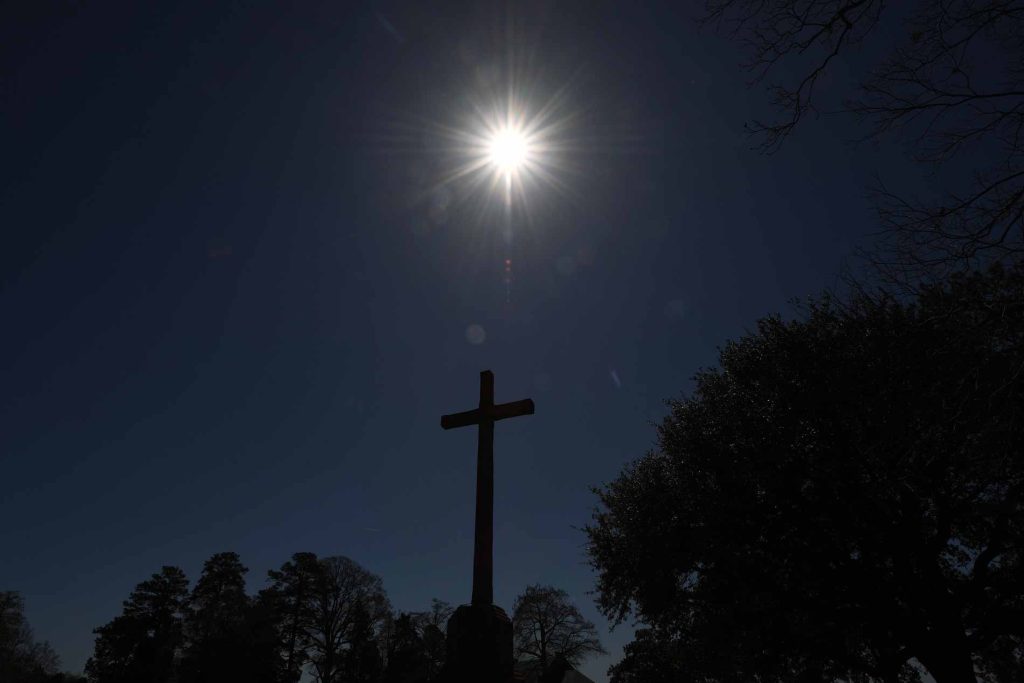Sidebar
The Role of the Christian Church

Matt McClain/The Washington Post via Getty Images
Starting in the 15th century, when European powers initiated contact and commercial activity with Sub-Saharan Africa, and continuing throughout the following centuries, organized religion played a leading role in developing, supporting, and legislating the Transatlantic Slave Trade.
Rooted in a belief that their duty to spread Christianity justified their actions, religious organizations did not only embrace human trafficking and the enslavement of millions of Africans—they actively participated.
The Roman Catholic Church was critical to the efforts of global expansion by Portugal, Spain, and France and the creation of massive commercial enterprises built on the suffering and death of enslaved people.1 Cottrol, Long Lingering Shadow, 55-57. In 1452 and 1455, Pope Nicholas V formally supported Spain and Portugal’s mass kidnapping and enslavement of Africans because it would help to Christianize enslaved people.2 Carl Wise and David Wheat, “Pope Nicolas V and the Portuguese Slave Trade,” in African Laborers for a New Empire: Iberia, Slavery, and the Atlantic World, Lowcountry Digital History Initiative, updated 2016, https://ldhi.library.cofc.edu/exhibits/show/african_laborers_for_a_new_emp/pope_nicolas_v_and_the_portugu#!.
In 1548, Pope Paul III used his “apostolic authority” to declare the slave trade legal in the eyes of the church, which empowered the religious monarchies in European nations to continue to engage in Transatlantic trafficking.3 Pius Onyemechi Adiele, The Popes, The Catholic Church, and The Transatlantic Enslavement of Black Africans 1418-1839 (Hildesheim, Zürich, New York: Georg Olms Verlag, 2017), 383-84. The “popes and their friends” accepted “gifts” of enslaved Black people shipped from Africa to Rome.4 Davis, Inhuman Bondage, 79.
Through Transatlantic trafficking, the church systematically extended its influence. European enslavers baptized millions of enslaved people whose labor they used to amass vast wealth.5 Arnold Bauer, The Church in the Economy of Spanish America: Censos and Depositos in the Eighteenth and Nineteenth Centuries (Durham, NC: Duke University Press, 1983), 707.
The Jesuits, a religious order of the Catholic Church, justified slavery as a path to evangelization, but this did not insulate the people they enslaved from the exploitation, brutality, and dehumanization that was central to the system of chattel slavery. Like other enslavers, the Jesuits forced enslaved people to work on “Jesuit sugar plantations, cattle ranches, tobacco farms and vineyards, urban colegios, and as domestic servants.”6 Adam Rothman, “The Jesuits and Slavery,” Journal of Jesuit Studies 8 (December 15, 2020).
During the Protestant Reformation in the 16th century, several groups of European Christians formally broke away from the Roman Catholic Church.7 Adiele, Catholic Church, and Transatlantic Enslavement, 16. These new Protestant churches also supported Transatlantic trafficking and believed the slave trade was wholly compatible with Christianity.
Like the Roman Catholic Church, the Church of England not only promulgated an ideological apparatus to support race-based slavery, but it also was directly involved in trafficking and enslavement. The Church of England owned and operated Codrington, a profitable sugar plantation in Barbados where over 275 enslaved men, women, and children labored in hot, grueling conditions to plant, harvest, and produce sugar, which required a worker to stand over a boiling cauldron for more than 12 hours at a time.8 Adam Hochschild, Bury the Chains: Prophets and Rebels in the Fight to Free an Empire’s Slaves (Boston: Houghton Mifflin, 2005), 61-68. Early death was expected and devastating injuries commonplace. Visitors to Codrington noted that hatchets were kept nearby and used to sever the limbs of enslaved people whose fingers got caught in the mill.9 Hochschild, Bury the Chains, 63-64. Those who tried to flee were whipped, branded, and forced to wear iron collars, but records show there were numerous escape attempts.10 Hochschild, Bury the Chains, 65.